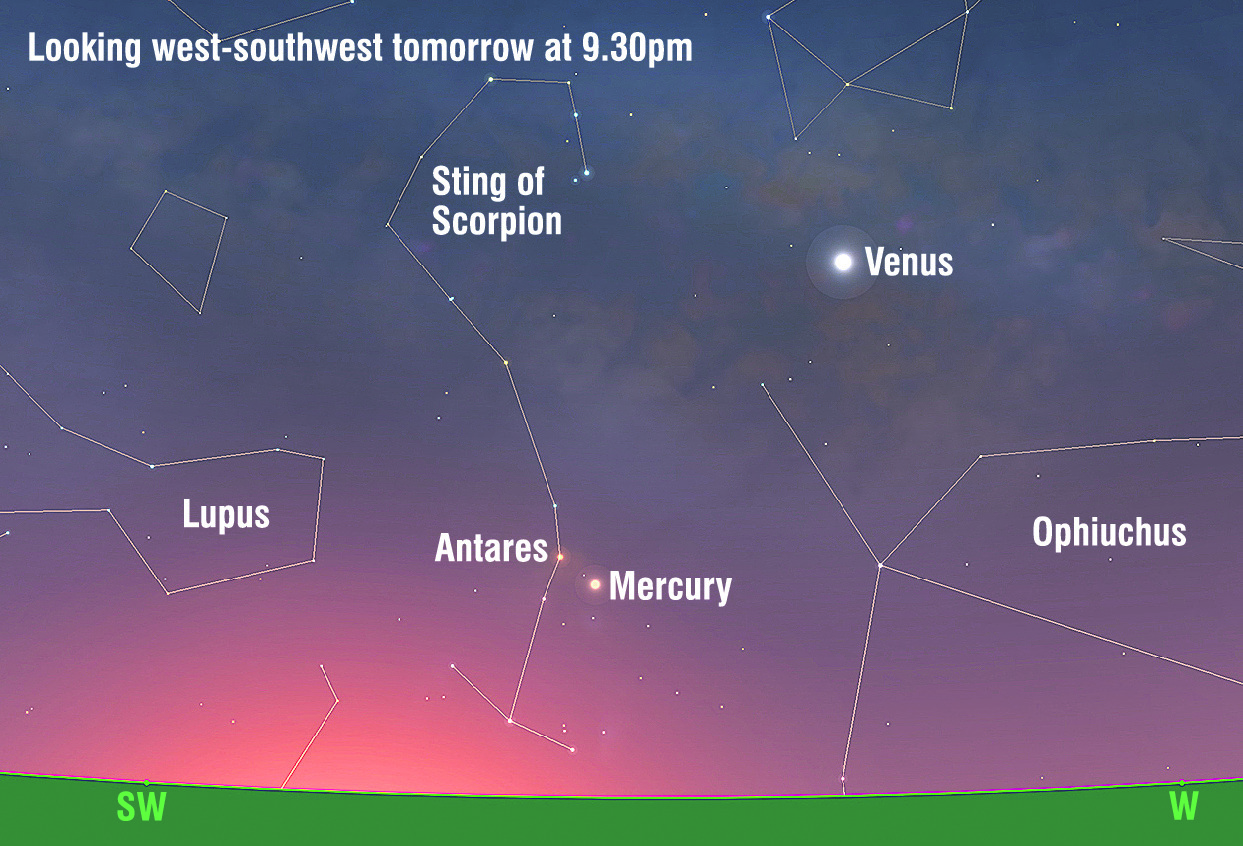
According to Greek legend, Orion, the great hunter, boasted about his skills and threatened to kill all the animals on Earth. In her anger, the goddess Gaia sent a scorpion to defeat him. After a fierce battle, the scorpion stung Orion, and both were placed among the stars to immortalise their story.

Their placements reflect the delicate balance between life and death, pride and punishment — a reminder, immortalised in the stars, of the forces that shape both the cosmos and human nature.
This week, early in the evening, Scorpio will set as the sky darkens. The constellation’s heart, Antares, glows a deep, fiery red, radiating warmth that contrasts with the cool blues and whites of nearby stars. This brilliant star, often called the ‘‘rival of Mars’’, has a striking, almost hypnotic presence that draws the eye as it flickers low in the sky.
Antares has another planetary rival this week. The planet Mercury is nearby, creating a rare and unique celestial alignment. Tomorrow night, Mercury will be just under two degrees below and to the right of Antares.
Mercury is more than three times brighter than Antares and, when viewed through a telescope, will appear as a tiny, 75% illuminated disk, resembling a gibbous moon. This week, Mercury is almost 170million km from Earth.
Another bright planet is also visible in this part of the sky. Venus, the second planet from the Sun, is likely the first celestial object you will spot after sunset.
It’s currently moving through the constellation Sagittarius, making it a captivating sight. If you use a telescope, you’ll notice that Venus exhibits almost the same phase as Mercury, as it is also 75% illuminated.













